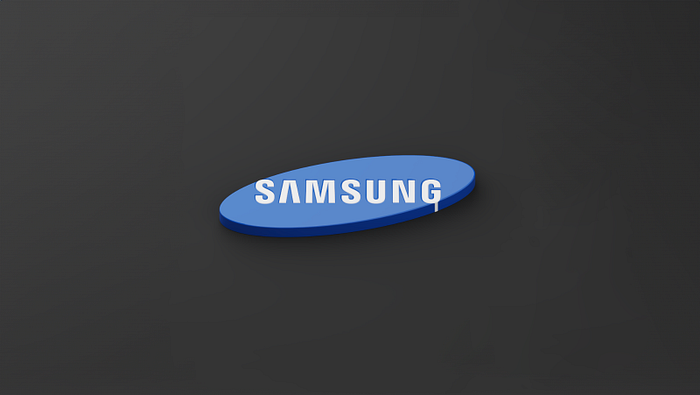Introduction
In the dynamic world of product design, principles are the guiding stars that navigate the journey from a concept to a tangible reality. These principles shape not just the visual appeal but also the functionality, accessibility, and emotional impact of a product. As we explore the design philosophies of tech giants like Google, Apple, Airbnb, Facebook, and more, we begin by understanding the range and nature of good design principles.
Understanding the Range and Nature of Good Design Principles
The Spectrum of Design Principle
Design principles in the tech industry span a wide spectrum. They range from the fundamental rules of graphic design, like balance and contrast, to the intricate principles of user experience (UX) and user interface (UI) design. Good design principles are not static rules but evolving concepts that adapt to new technologies, user needs, and cultural shifts.
Characteristics of Effective Design Principles
- Simplicity and Clarity: Good design principles are easy to understand and apply. They avoid complexity, focusing instead on clarity and directness.
- User-Centric Approach*: At the heart of effective design principles is the user. These principles prioritize user needs, ensuring that the design is intuitive, accessible, and engaging.
- Flexibility and Adaptability: The best design principles are flexible, allowing designers to adapt to different contexts and challenges while maintaining consistency and integrity.
- Innovation and Creativity: They encourage innovation and creativity, pushing designers to explore new ideas and solutions.
The Role of Design Principles in Product Development
Design principles play a crucial role in shaping the product development process. They act as a compass, guiding design decisions, resolving conflicts, and aligning the team with a shared vision. Effective design principles are instrumental in creating products that resonate with users and stand out in the market.
Google’s Material Design: A Symphony of Science and Imagination

The Concept of Material Design
Google’s Material Design is a philosophy that transcends traditional design boundaries, fusing tactile realism with innovative technology. It’s an approach that seeks to make the user interface intuitive and responsive, akin to interacting with real materials. The concept is rooted in the familiar — drawing inspiration from the tangible world of paper and ink — yet it ventures into the realms of imagination and technology.
Principles of Material Design
- Material as a Metaphor: This principle is the cornerstone of Google’s design philosophy. It’s about creating a rationalized space, where the digital environment mimics the physical world, yet allows for the flexibility and magic of technology.
- Realistic Lighting and Movement: Google emphasizes the importance of how light interacts with surfaces. This approach helps in conveying depth, focus, and hierarchy within the interface.
- Bold, Graphic, and Intentional: Material Design employs bold colors, deliberate imagery, and purposeful white space. These elements create a visual hierarchy that guides the user through the interface, making the experience not just visually pleasing but also functionally efficient.
Impact and Applications
Material Design has revolutionized the way designers and developers approach UI/UX design. It has led to the creation of interfaces that are more intuitive and engaging, fostering a deeper connection between the user and the digital world.
Apple’s Design Ethos: The Harmony of Form and Function

Apple’s Design Philosophy
Apple has always been synonymous with designs that epitomize elegance and simplicity. Their design principles are deeply rooted in the belief that form and function are inseparable.
Key Design Principles
- Aesthetic Integrity: This is about aligning the product’s appearance with its purpose. Whether it’s for professional use or entertainment, Apple’s design ensures that the aesthetic complements the functionality.
- Consistency and Intuitiveness: Apple’s design thrives on familiarity — using consistent elements that users have come to understand and expect. This consistency extends across all Apple products, creating a seamless experience for users.
- Empowering Through Design: Apple places the user in the driver’s seat. The design is about giving users control while ensuring safety and preventing unwanted outcomes.
The Apple Experience
The Apple design philosophy has led to the creation of products that are not just devices but experiences. From the tactile feel of the devices to the intuitiveness of the iOS, Apple’s design principles have shaped a unique and cohesive ecosystem.
Airbnb’s Design Language: Crafting a Sense of Belonging

Airbnb’s Approach to Design
Airbnb’s design principles are centered around creating a sense of belonging and connection. Their design language speaks to a global audience, transcending cultural and linguistic barriers.
Design Principles at Airbnb
- Unified and Universal: Airbnb’s design is cohesive and inclusive, catering to a diverse global community. Every element in the design contributes to a unified experience.
- Iconic and Conversational: The design language of Airbnb is both iconic and engaging. It aims to create an immersive experience that is both visually appealing and communicatively effective.
- Design as a Bridge: Airbnb’s design serves as a bridge between the online and offline worlds. It’s about creating a platform where users can form real connections and experiences.
Influencing User Experience
Airbnb’s design principles have played a pivotal role in making the platform not just a service, but a community. The design fosters trust and encourages exploration, which is fundamental to the Airbnb experience.
Facebook’s Design Blueprint: Connecting the World

Facebook’s Design Ideology
Facebook’s design principles are crafted to support its mission of connecting people. The design is about creating an interface that is familiar, accessible, and engaging.
Principles Guiding Facebook’s Design
- Universal and Human-Centric: Facebook’s design is universal, catering to a diverse, global audience. At the same time, it remains human-centric, emphasizing personal connections.
- Clean and Consistent: The design aesthetic of Facebook is clean and understated, which serves to amplify user content. Consistency across the platform enhances usability and user comfort.
- Fast and Transparent: Facebook values
Tesla’s Pioneering Design Philosophy

Innovation at the Forefront
Tesla’s design philosophy is anchored in pioneering innovation. Their approach intertwines cutting-edge technology with sustainable practices, revolutionizing the automotive industry.
Principles of Tesla’s Design
- Sustainability and Performance: Tesla designs with an eye on environmental impact, creating vehicles that are both eco-friendly and high-performing.
- Futuristic Aesthetics: Their design aesthetic is futuristic, reflecting the advanced technology that powers their vehicles.
- User Experience: Tesla focuses on the driver’s experience, ensuring that each aspect of the vehicle is intuitive and enhances the joy of driving.
Impact of Tesla’s Design Approach
Tesla’s design principles have not only set new standards in the automotive industry but also inspired a shift towards more sustainable and technologically advanced vehicles.
Netflix’s User-Centric Interface Design

Personalization at Its Core
Netflix’s design centers on creating a highly personalized and user-friendly interface. The platform is designed to make content discovery as straightforward and enjoyable as possible.
Principles of Netflix’s Design
- Ease of Use: The platform is intuitively navigable, ensuring users can find what they want with minimal effort.
- Customization: Netflix uses algorithms to personalize the user experience, recommending content based on individual viewing habits.
- Visual Appeal: The design is visually appealing, with a focus on high-quality imagery and a clean layout.
Impact of Netflix’s Design Philosophy
Netflix’s approach has redefined the user experience in streaming services, prioritizing user preferences and ease of navigation.
Spotify’s Harmonious and Dynamic Design

Design That Resonates with Music
Spotify’s design is as dynamic and vibrant as the music it streams. The platform combines aesthetic appeal with functional simplicity to create an immersive listening experience.
Principles of Spotify’s Design
- Aesthetic Engagement: The interface is visually engaging, enhancing the overall user experience.
- Functional Fluidity: Spotify ensures seamless interaction, whether it’s searching for music, creating playlists, or exploring new genres.
- Personalized Experience: The design supports personalized music recommendations, tailoring the experience to individual tastes.
Impact of Spotify’s Design Strategy
Spotify’s design has been instrumental in creating an engaging and personalized music streaming experience, setting a benchmark in the industry.
Dropbox’s Intuitive and Collaborative Design

Clarity and Collaboration at the Heart
Dropbox’s design philosophy prioritizes making file storage and sharing intuitive and collaborative. The interface is user-friendly, facilitating seamless collaboration and organization.
Principles of Dropbox’s Design
- Simplicity and Clarity: The design is straightforward, making file management and collaboration easy for users of all technical levels.
- Efficient Collaboration: Dropbox’s interface is tailored to enhance collaborative efforts, integrating smoothly with various productivity tools.
- Secure and Reliable: The design also emphasizes security and reliability, crucial for storing and sharing important files.
Impact of Dropbox’s Design Approach
Dropbox’s design has transformed file storage and sharing, making it more accessible, efficient, and secure.
Xiaomi’s Balanced Approach to Design

Affordability Meets Innovation
Xiaomi’s design strategy finds a unique balance between affordability and cutting-edge innovation. Their products are designed to be accessible while incorporating the latest technological advancements.
Principles of Xiaomi’s Design
- User-Friendly Technology: Xiaomi focuses on making technology accessible, ensuring their products are user-friendly and affordable.
- Elegant Aesthetics: Despite the focus on affordability, Xiaomi does not compromise on aesthetics, offering sleek and modern designs.
- Functionality and Durability: Xiaomi designs for functionality and durability, ensuring their products meet the daily needs of users.
Impact of Xiaomi’s Design Philosophy
Xiaomi’s approach has made advanced technology accessible to a broader audience, challenging the notion that high-quality design is synonymous with high cost.
Samsung’s Diverse and Inclusive Design
Versatility in Innovation

Samsung’s design principles are characterized by their versatility and commitment to inclusivity. They cater to a wide range of consumers, offering a variety of products from smartphones to home appliances.
Principles of Samsung’s Design
- Diverse Product Range: Samsung designs for a diverse consumer base, ensuring their products meet various needs and preferences.
- Innovative and User-Friendly: Samsung continuously innovates while keeping their designs user-friendly and intuitive.
- Quality and Reliability: Their design ethos also emphasizes quality and reliability, ensuring their products are both durable and high-performing.
Impact of Samsung’s Design Strategy
Samsung’s design principles have contributed to its position as a leader in various tech sectors, known for its innovative, diverse, and reliable products.
Microsoft’s Design Language: Empowering Through Innovation

Functionality Meets Aesthetics
Microsoft’s design philosophy intertwines functionality with aesthetics, aiming to empower users through innovative and accessible technology.
Principles of Microsoft’s Design
- Simplicity and Versatility: Microsoft focuses on creating designs that are simple yet versatile, catering to a broad user base from personal to professional use.
- Intuitive User Experience: The design across Microsoft’s products, especially its software, is intuitive, ensuring users can navigate and utilize features with ease.
- Harmonious Ecosystem: Microsoft strives to create a harmonious ecosystem where its various products and services seamlessly integrate, providing a cohesive user ### experience.
Impact of Microsoft’s Design Approach
Microsoft’s design principles have been fundamental in shaping the way we interact with technology, particularly in the personal computing and office productivity space. Their approach has consistently focused on enhancing user productivity and efficiency.
Conclusion
What are the good principles?
- Simple
- Have a real world examples
- Guide design decisions
- Reflect your brand
Understanding and applying good design principles is crucial in the tech industry. It’s not just about making products that look good — it’s about creating experiences that are meaningful, intuitive, and impactful. As technology and user needs evolve, so too must our approach to design. The principles outlined by these tech giants offer valuable insights into creating products that not only meet but exceed user expectations.














